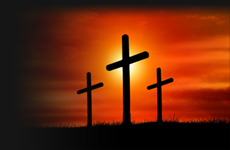Jesus' Crucifixion In Art
The symbol of Christ on the cross has infiltrated culture in innumerable ways, and depictions have become ubiquitous. There is no other subject matter that better reflects the historical progression of artistic expression. This is fitting, as there is no other event that has had comparable effect on all aspects of human history.

"The Dead Christ Mourned"
Artist: Annibale Carracci
c. 1604
Painting
The Dead Christ Mourned (also known as Lamentation of Christ, Pietà with the Three Marys, or The Three Marys) is an oil painting on canvas of c. 1604 by Annibale Carracci. It was in the Orleans Collection before arriving in Great Britain in 1798. In 1913 it was donated to the National Gallery, London, which describes it as "perhaps the most poignant image in [its] collection of the pietà – the lamentation over the dead Christ following his crucifixion – and one of the greatest expressions of grief in Baroque art".

"Christ with Crown of Thorns"
Artist: Peter Paul Rubens
c. 1612
Painting
This work is linked to John 19:5 "Ecce homo" which means "behold the man") are the Latin words used by Pontius Pilate in the Vulgate translation of the Gospel of John, when he presents a scourged Jesus, bound and crowned with thorns, to a hostile crowd shortly before His crucifixion.
This oil on panel painting measures 126 × 96 cm.
- page 37 of 38 -
